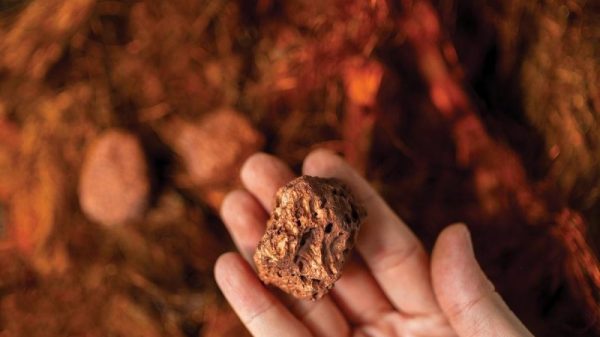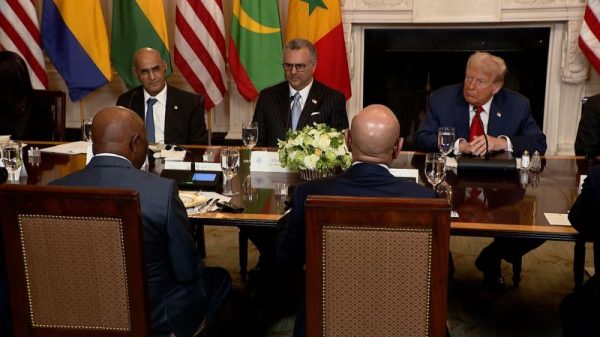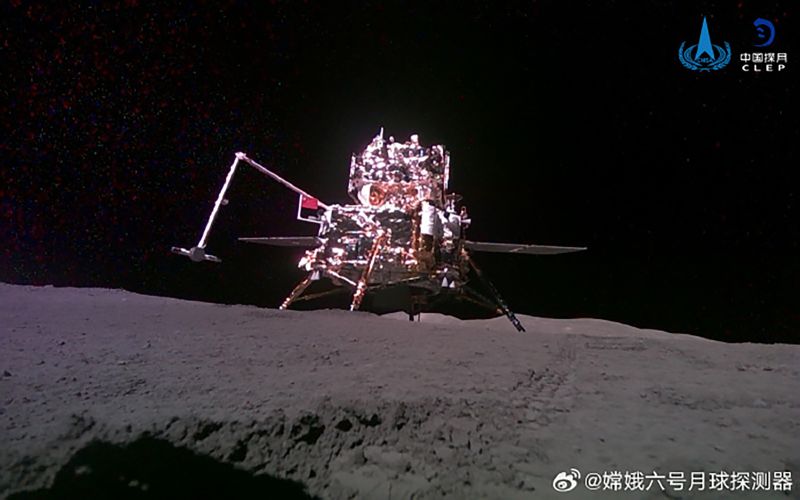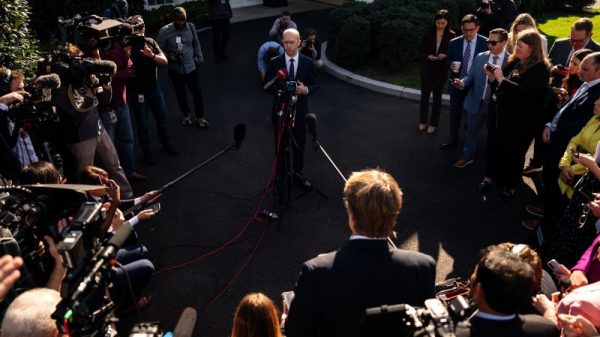China’s Chang’e-6 lunar probe departed from the far side of the moon on Tuesday, moving a step closer to completing an ambitious mission that underlines the country’s rise as a space superpower.
In a symbolic moment before takeoff, China also reportedly became the first country to display its national flag on the moon’s far side, which permanently faces away from Earth.
The probe, carrying the first lunar rocks ever collected from the far side of the moon, took off and entered lunar orbit early Tuesday Beijing time, following successful sample collection over the previous two days, according to a statement from the China National Space Administration (CNSA).
Its return journey to Earth is estimated to take about three weeks, with a landing expected in China’s Inner Mongolia region around June 25.
The successful return of the samples would give China a head start in harnessing the strategic and scientific benefits of expanded lunar exploration – an increasingly competitive field that has contributed to what NASA chief Bill Nelson calls a new “space race.”
This is the second time China has collected samples from the moon, after the Chang’e-5 brought back rocks from the near side in 2020.
Earlier this year, Nelson appeared to acknowledge China’s pace – and concerns about its intentions – were driving the American urgency to return to the moon, decades after its Apollo-crewed missions.
A photo posted by CNSA Tuesday and trending on China’s X-like Weibo platform shows the drilled surface in a shape resembling the Chinese character “zhong,” or “middle” in English – the first character in the Chinese word for “China.”
The Chang’e-6 probe withstood “the test of high temperatures” and collected the samples by drilling into the moon’s surface and scooping the soil and rocks up with a mechanical arm, CNSA said.
After collecting the specimens, Chang’e-6 extended a robotic arm to raise the Chinese flag, according to an animation released by CNSA.
The flag, made from the volcanic rock basalt, was designed to resist corrosion and the extreme temperatures on the far side of the moon with an eye on future lunar missions, a Chang’e-6 engineer told state-broadcaster CCTV.
The rock “was crushed, melted and drawn into filaments about one third of the diameter of a human hair, then spun into thread and woven into cloth,” said engineer Zhou Changyi.
“The lunar surface is rich in basalt,” Zhou added. “Since we’re building a lunar base in the future, we will most likely have to make basalt into fibers and use it as building materials.”
Historic mission
Chang’e-6 successfully landed on Sunday morning in the South Pole-Aitken Basin, the moon’s oldest impact basin formed some 4 billion years ago. It marked the second time a mission has successfully reached the far side of the moon, after China first completed that historic feat in 2019 with its Chang’e-4 probe.
If all goes as planned, the mission — which began on May 3 and is expected to last 53 days — could be a key milestone in China’s push to become a dominant space power.
The country’s plans include landing astronauts on the moon by 2030 and building a research base at its south pole, a region believed to contain water ice.
Samples collected by the Chang’e-6 lander could provide key clues into the origin and evolution of the moon, Earth and the solar system, experts say – while the mission itself provides important data and technical practice to advance China’s lunar ambitions.
“The enigmatic lunar far side is so different from the lunar nearside in so many ways, that without returned samples, lunar scientists can’t fully understand the moon as an entire planetary body,” said James Head, a professor emeritus at Brown University who has collaborated with Chinese scientists leading the mission. “Returned samples from Chang’e 6 will permit major strides to be made in solving these problems.”
The far side of the moon is out of range of normal communications, which means Chang’e-6 must also rely on a satellite that was launched into lunar orbit in March, the Queqiao-2.
China plans to launch two more missions in the Chang-e series as it nears its 2030 target of sending astronauts to the moon.
Space race
Multiple nations are expanding their lunar programs, with a growing focus on securing access to resources and further deep-space exploration.
Last year, India landed a spacecraft on the moon for the first time, while Russia’s first lunar landing mission in decades ended in failure when its Luna 25 probe crashed into the moon’s surface.
In January, Japan became the fifth country to land a spacecraft on the moon, though its Moon Sniper lander faced power issues due to an incorrect landing angle. The following month, IM-1, a NASA-funded mission designed by Texas-based private firm Intuitive Machines, touched down close to the lunar south pole.
That landing – the first by a US-made spacecraft in over five decades – is among several planned commercial missions intended to explore the lunar surface before NASA attempts to return US astronauts there as soon as 2026 and build its scientific base camp.


































